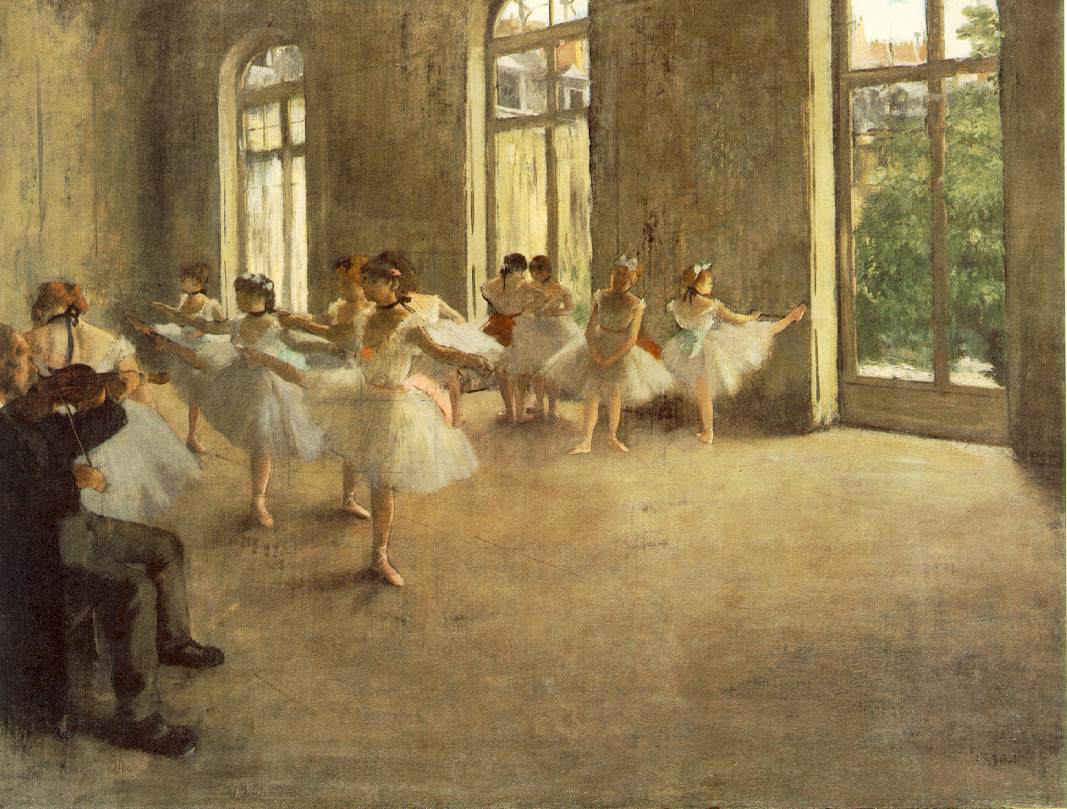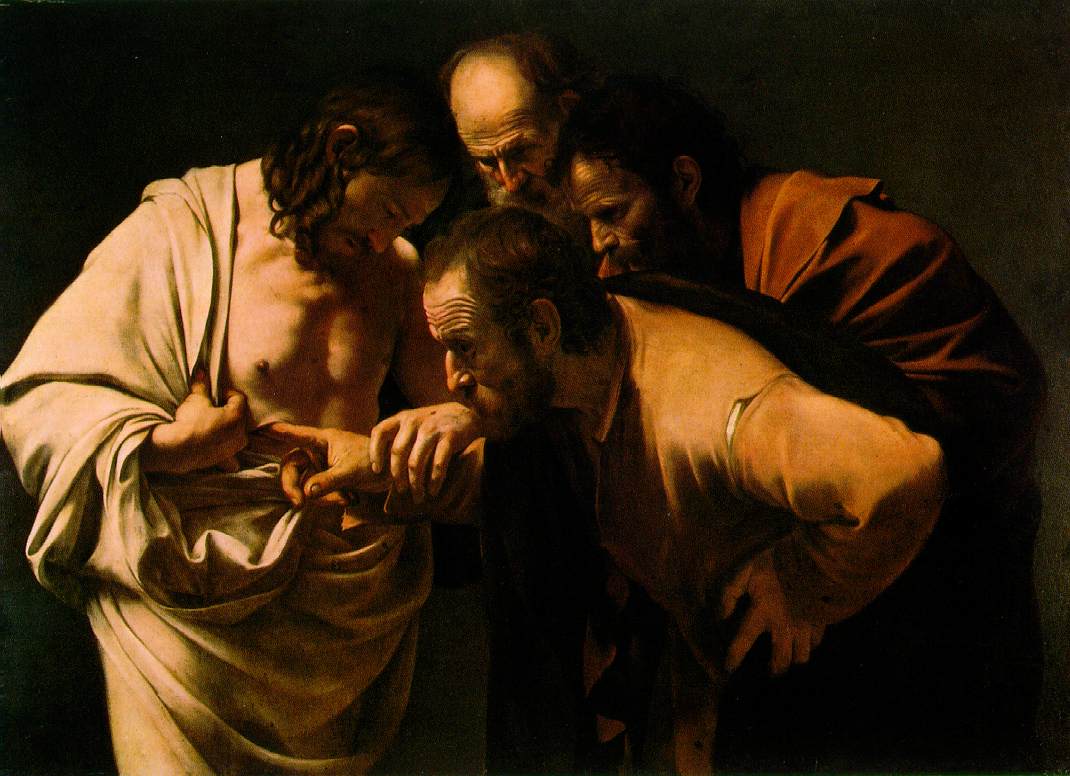
This Art History Timeline includes periods we did not cover, but it's good to take a look...
The Gothic Period was roughly from 1350-1450, in middleEurope . The art was
characterized by the following:
- Religious subject matter
- Use of gold to “elevate” the art, making it worthy of a church altar
- Figures that appear boneless - the artists had a rudimentary understanding of the human figure, but did attempt to capture it
- The Christ child is depicted as a tiny adult rather than a baby, again, because of this lack of understanding of the human form and development
- An awkward attempt at perspective - the artists had a rudimentary understanding of linear perspective, which resulted in a “stacked up” feeling in the paintings’ spaces
- Because of the Black Plague and the general somber attitude of the times, figures appear sad, lacking joy
***********************************************************************************************
The Renaissance Period was roughly from 1450-1550, acrossEurope. The art was characterized by the following:
- More secular subject matter because of sponsorship of wealthy persons
- Figures that appear photo-realistic - the artists performed studies on cadavers to gain an understanding of the human figure
- A sharp, accurate and believable perspective - the artists developed tools to aid in their understanding of linear perspective, lacking joy.
This video explains the Renaissance Period.
The 10 Most Important Renaissance Paintings
Our project for the Renaissance period will be re-creating a Renaissance painting (see list above). We will use iPads to capture photos of the artist (you) standing in for the subjects of the painting. We will use collage to re-create the rest of the painting.
*********************************************************************************************
The Baroque Period was roughly from 1550-1650, across Europe. The art was characterized by the following:
Realism inFrance
********************************************************************************************
Impressionism came about in the 1870’s and ‘80’s. Characteristics of Impressionist paintings include relatively small, thin, yet visible brush strokes; open, diagonal composition; emphasis on accurate depiction of light in its changing qualities ; common, ordinary subject matter, often depicting leisure or relaxation and home life. The Impressionists were influenced by the advent of photography (trying to capture the same spontaneity of the camera, but something more painterly), the invention of tubes to hold paint (lets painters go outside to observe nature), and the circulation of Japanese woodcut prints inParis



*********************************************************************
Post-Impressionists extended Impressionism
while rejecting its limitations: they continued using vivid colours, thick application of paint, distinctive brush strokes, and real-life subject matter, but they were more inclined to emphasize geometric forms, to distort form for expressive effect, and to use unnatural or arbitrary colour. Post-Impressionists often reduced objects to their basic shapes while retaining the bright fresh colours of Impressionism. Some experimented with Pointillism. Vincent van Gogh used colour and vibrant swirling brush strokes to convey his feelings and his state of mind. The FAUVES were known as the Wild Beasts of Color. The POINTILLISTS were mainly concerned with how dots of color placed besie each other would mix in the viewer's eye.


******************************************************************************************
Surrealism began in the early 1920s. The aim was to fuse the worlds of dream and reality. Artists painted unnerving, illogical scenes with photographic precision, created strange creatures from everyday objects and developed painting techniques that allowed the unconscious to express itself.
 Expressionism was a modernist movement, in painting, originating in
Expressionism was a modernist movement, in painting, originating in Germany
 The American Scene is defined by a group of painters who create a sense of place. Sometimes known as Regionalists, these painters illustrate life in America in the early 20th century.
The American Scene is defined by a group of painters who create a sense of place. Sometimes known as Regionalists, these painters illustrate life in America in the early 20th century. 

*********************************************************************
American modernism affirms the power of human beings to create, improve, and reshape their environment, with the aid of scientific knowledge, and technology. The idea is that individual human beings can define themselves through their own inner resources and create their own vision of existence. American modernism is an artistic and cultural movement in the US with its core period between World War I and World War II and continuing into the 21st century. We looked at the work of Stuart Davis, deciphering his views of NYC
The Gothic Period was roughly from 1350-1450, in middle
- Religious subject matter
- Use of gold to “elevate” the art, making it worthy of a church altar
- Figures that appear boneless - the artists had a rudimentary understanding of the human figure, but did attempt to capture it
- The Christ child is depicted as a tiny adult rather than a baby, again, because of this lack of understanding of the human form and development
- An awkward attempt at perspective - the artists had a rudimentary understanding of linear perspective, which resulted in a “stacked up” feeling in the paintings’ spaces
- Because of the Black Plague and the general somber attitude of the times, figures appear sad, lacking joy
***********************************************************************************************
The Renaissance Period was roughly from 1450-1550, acrossEurope. The art was characterized by the following:
- More secular subject matter because of sponsorship of wealthy persons
- Figures that appear photo-realistic - the artists performed studies on cadavers to gain an understanding of the human figure
- A sharp, accurate and believable perspective - the artists developed tools to aid in their understanding of linear perspective, lacking joy.
This video explains the Renaissance Period.
The 10 Most Important Renaissance Paintings
Our project for the Renaissance period will be re-creating a Renaissance painting (see list above). We will use iPads to capture photos of the artist (you) standing in for the subjects of the painting. We will use collage to re-create the rest of the painting.
*********************************************************************************************
The Baroque Period was roughly from 1550-1650, across Europe. The art was characterized by the following:
- Religious subject matter sometimes, not always...attempts to reach people through bible stories that were widely known. Catholic church was beginning to splinter into differing factions.
- Dynamic composition, pointing out to all edges of canvas; twisting, turning figures; S or Z composition
- Figures are beautifully rendered
- Chiaroscuro: the figures are bathed in light and the backgrounds very dramatically fade to black, like a stage set.
Realism in
********************************************************************************************
Impressionism came about in the 1870’s and ‘80’s. Characteristics of Impressionist paintings include relatively small, thin, yet visible brush strokes; open, diagonal composition; emphasis on accurate depiction of light in its changing qualities ; common, ordinary subject matter, often depicting leisure or relaxation and home life. The Impressionists were influenced by the advent of photography (trying to capture the same spontaneity of the camera, but something more painterly), the invention of tubes to hold paint (lets painters go outside to observe nature), and the circulation of Japanese woodcut prints in



*********************************************************************
Post-Impressionists extended Impressionism
while rejecting its limitations: they continued using vivid colours, thick application of paint, distinctive brush strokes, and real-life subject matter, but they were more inclined to emphasize geometric forms, to distort form for expressive effect, and to use unnatural or arbitrary colour. Post-Impressionists often reduced objects to their basic shapes while retaining the bright fresh colours of Impressionism. Some experimented with Pointillism. Vincent van Gogh used colour and vibrant swirling brush strokes to convey his feelings and his state of mind. The FAUVES were known as the Wild Beasts of Color. The POINTILLISTS were mainly concerned with how dots of color placed besie each other would mix in the viewer's eye.


******************************************************************************************
Surrealism began in the early 1920s. The aim was to fuse the worlds of dream and reality. Artists painted unnerving, illogical scenes with photographic precision, created strange creatures from everyday objects and developed painting techniques that allowed the unconscious to express itself.
Surrealist works feature the element of
surprise, unexpected juxtapositions and non sequitur.
*********************************************************
 Expressionism was a modernist movement, in painting, originating in
Expressionism was a modernist movement, in painting, originating in
Expressionism
was developed as an avant-garde style
before the First World War. It remained popular in Berlin

*********************************************************************
American modernism affirms the power of human beings to create, improve, and reshape their environment, with the aid of scientific knowledge, and technology. The idea is that individual human beings can define themselves through their own inner resources and create their own vision of existence. American modernism is an artistic and cultural movement in the US with its core period between World War I and World War II and continuing into the 21st century. We looked at the work of Stuart Davis, deciphering his views of NYC
and thinking about the flat colors and big shapes he used.
Charles Burchfield was another artist who applied a unique viewpoint to the observable world.

*****************************************************************************

^^LINOLEUM BLOCK PRINTING ^^
This video will refresh your memory on the steps for block printing
Charles Burchfield was another artist who applied a unique viewpoint to the observable world.

*****************************************************************************

^^LINOLEUM BLOCK PRINTING ^^
This video will refresh your memory on the steps for block printing





_005.jpg)



